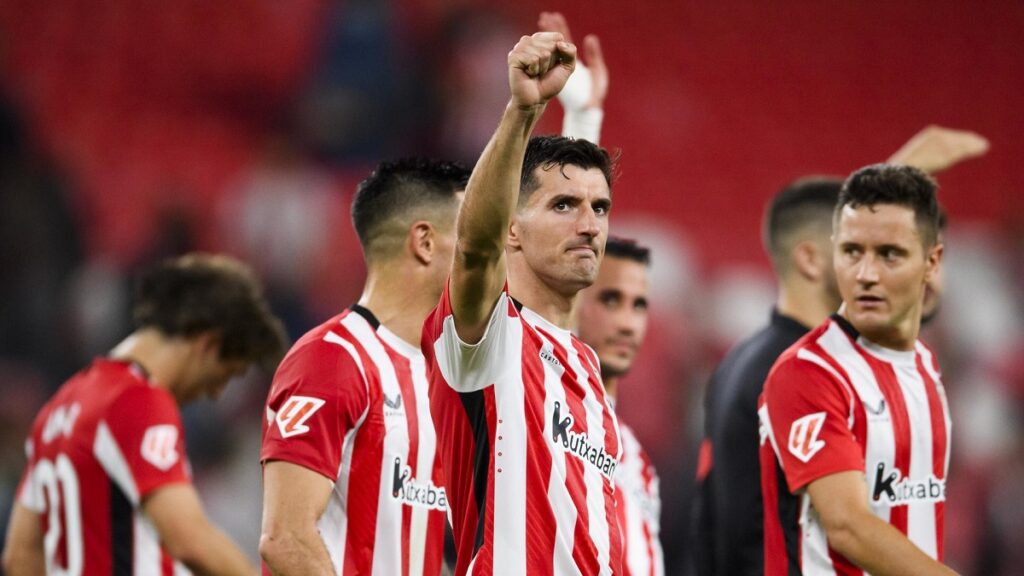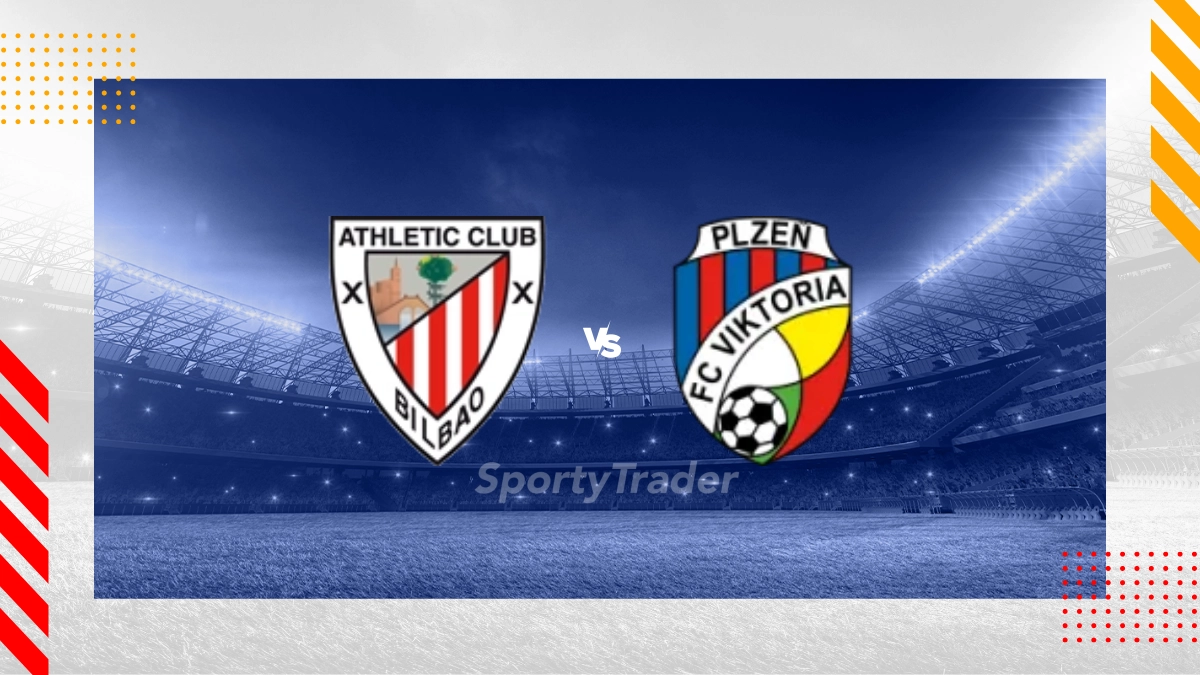When it comes to European football, the rivalry between Athletic Club and Viktoria Plzeň is one that fans eagerly anticipate. These two clubs bring unique styles, rich histories, and fierce competition to the pitch, making their matchups unforgettable. The clash between Athletic Club's Basque pride and Viktoria Plzeň's Czech dominance has become a spectacle that transcends borders. Let’s dive into what makes these teams tick and why their encounters are must-watch events for any football enthusiast.
Athletic Club, hailing from Bilbao, Spain, has long been a symbol of Basque identity and passion in football. Their commitment to fielding players with Basque roots adds a layer of authenticity and cultural significance to their gameplay. Meanwhile, Viktoria Plzeň, based in the Czech Republic, has emerged as a powerhouse in Eastern European football, consistently challenging the status quo in domestic and international competitions.
This article will explore the history, tactics, key players, and the thrilling matchups between these two giants. Whether you're a die-hard fan or just dipping your toes into the world of European football, this deep dive will give you all the insights you need to appreciate the drama and excitement that unfolds whenever Athletic Club and Viktoria Plzeň face off.
Read also:Steelers Fans Demand Pickens Trade The Buzz Surrounding The Franchise
Table of Contents
- History of Athletic Club and Viktoria Plzeň
- Biographies of Key Players
- Tactical Approaches and Playing Styles
- Notable Matchups Between the Teams
- Statistical Insights
- Fan Culture and Support
- Future Prospects and Predictions
- Impact on European Football
- Challenges Faced by Both Clubs
- Conclusion
History of Athletic Club and Viktoria Plzeň
Let’s rewind the clock and take a look at the storied histories of both Athletic Club and Viktoria Plzeň. Athletic Club, founded way back in 1898, has been a cornerstone of Spanish football for over a century. Known for their strict policy of only fielding players with Basque connections—be it born or bred in the region—they’ve carved out a unique niche in La Liga. This commitment to their roots has earned them respect and admiration, even if it sometimes limits their player pool.
On the other side of the continent, Viktoria Plzeň was established in 1924 and has grown into one of the most successful clubs in the Czech Republic. Their rise to prominence in recent years has been nothing short of impressive, consistently competing for domestic titles and making waves in European competitions. With a mix of young talent and seasoned veterans, they’ve proven themselves as a force to be reckoned with on the international stage.
Historical Achievements
Athletic Club boasts an impressive list of accomplishments, including multiple La Liga titles and Copa del Rey victories. Their ability to punch above their weight in Spain’s top-tier league is a testament to their resilience and strategic management. Meanwhile, Viktoria Plzeň has dominated the Czech scene, winning numerous league titles and cups. They’ve also made their presence felt in the UEFA Europa League, reaching the quarterfinals in recent seasons.
Biographies of Key Players
Every great team is built around its star players, and both Athletic Club and Viktoria Plzeň are no exception. Let’s take a closer look at some of the key figures who have shaped these clubs over the years.
Athletic Club Key Players
From the legendary Carlos Gurpegi to the current standout Iñaki Williams, Athletic Club has produced a roster of players who embody the club’s values and traditions. Below is a brief overview of some of their standout athletes:
| Name | Position | Years Active | Notable Achievements |
|---|---|---|---|
| Iñaki Williams | Forward | 2011–Present | Record-breaking goalscorer for the club |
| Oscar de Marcos | Winger/Defender | 2011–Present | Key player in multiple Copa del Rey wins |
Viktoria Plzeň Key Players
Viktoria Plzeň has also been home to a number of talented individuals who’ve left their mark on the game. Here are a few of their standout players:
Read also:Emma Antar The Rising Star In The Entertainment World
| Name | Position | Years Active | Notable Achievements |
|---|---|---|---|
| Patrik Schick | Striker | 2016–2019 | Top scorer in multiple seasons; transferred to top European clubs |
| Vladimír Darida | Midfielder | 2012–Present | Club captain and integral part of their domestic success |
Tactical Approaches and Playing Styles
The tactical philosophies of Athletic Club and Viktoria Plzeň couldn’t be more different, yet both are highly effective in their own right. Athletic Club favors a high-pressing, physical style of play that capitalizes on their players’ athleticism and work ethic. Their 4-4-2 formation is often deployed to maintain a solid defensive structure while allowing for quick transitions on offense.
Viktoria Plzeň, on the other hand, relies on a more fluid and adaptable approach. They frequently switch between a 4-2-3-1 and a 3-5-2 formation depending on the opponent and match situation. Their focus on ball possession and precise passing makes them a tough nut to crack for any team.
Strengths and Weaknesses
- Athletic Club Strengths: Strong defensive organization, physicality, and Basque pride.
- Athletic Club Weaknesses: Limited player pool due to their recruitment policy; can struggle against technically superior opponents.
- Viktoria Plzeň Strengths: Tactical flexibility, technical prowess, and depth in squad.
- Viktoria Plzeň Weaknesses: Vulnerable to counter-attacks; occasional inconsistency in European competitions.
Notable Matchups Between the Teams
The encounters between Athletic Club and Viktoria Plzeň have been nothing short of epic. One of the most memorable matchups came during the UEFA Europa League group stages, where both teams showcased their strengths and weaknesses in thrilling fashion. Athletic Club’s tenacity and physicality were on full display, while Viktoria Plzeň’s technical flair and tactical discipline provided a perfect counterpoint.
Key Moments
In one particular match, Iñaki Williams’ last-minute equalizer for Athletic Club sent the San Mamés crowd into a frenzy, while Patrik Schick’s stunning volley for Viktoria Plzeň in another game was a moment of pure brilliance. These games have consistently delivered drama, excitement, and a healthy dose of unpredictability.
Statistical Insights
Numbers don’t lie, and the stats tell a compelling story about the head-to-head battles between Athletic Club and Viktoria Plzeň. Over the years, Athletic Club has slightly edged out Viktoria Plzeň in terms of wins, but the Czech side has shown remarkable resilience, often securing crucial points in away games.
Some key statistics include:
- Average possession: Athletic Club (52%) vs Viktoria Plzeň (48%)
- Goals scored per game: Athletic Club (1.8) vs Viktoria Plzeň (1.6)
- Shots on target: Athletic Club (5.5 per game) vs Viktoria Plzeň (4.8 per game)
Fan Culture and Support
The passion of the fans is what makes football truly special, and both Athletic Club and Viktoria Plzeň boast incredibly loyal and vocal supporter bases. Athletic Club’s San Mamés stadium is renowned for its electric atmosphere, with fans creating a wall of noise that intimidates even the toughest opponents. Meanwhile, Viktoria Plzeň’s fans, known for their vibrant banners and chants, bring a festival-like vibe to every game.
Impact of Fans on Matches
The influence of fans on match outcomes cannot be overstated. The deafening roar of Athletic Club supporters can rattle opposing players, while the unwavering support of Viktoria Plzeň fans can inspire their team to achieve great things. This mutual respect and admiration between the two sets of fans add another layer of excitement to the rivalry.
Future Prospects and Predictions
Looking ahead, both Athletic Club and Viktoria Plzeň have bright futures. Athletic Club continues to nurture young talent from the Basque region, ensuring a steady pipeline of skilled players for years to come. They’re also investing in modern facilities and infrastructure to stay competitive in an ever-evolving football landscape.
Viktoria Plzeň, meanwhile, is focused on expanding their international profile and attracting top-tier talent from across Europe. Their strategic approach to player development and recruitment positions them well for continued success in domestic and European competitions.
Impact on European Football
The influence of Athletic Club and Viktoria Plzeň extends beyond their respective leagues, impacting the broader landscape of European football. Athletic Club’s commitment to their unique recruitment philosophy challenges the status quo, while Viktoria Plzeň’s rise as a dominant force in Eastern Europe highlights the growing importance of smaller leagues on the continent.
Challenges Faced by Both Clubs
Of course, no journey is without its obstacles. Athletic Club faces the perennial challenge of maintaining their competitive edge while adhering to their strict recruitment policy. Finding top-tier talent within the Basque region is no easy feat, and the club must constantly innovate to stay ahead.
Viktoria Plzeň, on the other hand, battles the financial disparity between themselves and the top clubs in Western Europe. Retaining their best players in the face of lucrative offers from bigger clubs is a constant concern, but they’ve shown a knack for rebuilding and reloading quickly.
Conclusion
The rivalry between Athletic Club and Viktoria Plzeň is a microcosm of what makes European football so captivating. From their rich histories and unique playing styles to their passionate fans and promising futures, these two clubs offer everything a football enthusiast could ask for. As they continue to compete on the continental stage, one thing is certain: their matchups will always be filled with drama, skill, and heart.
So, whether you’re cheering for Athletic Club’s Basque warriors or Viktoria Plzeň’s Czech crusaders, one thing is clear—this rivalry is here to stay. Join the conversation, share your thoughts, and let’s keep the debate alive. Who do you think will come out on top in their next clash? Let us know in the comments below!


